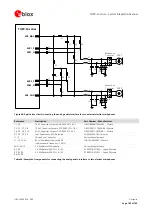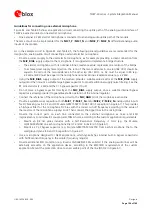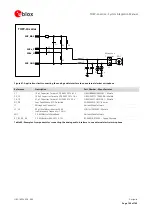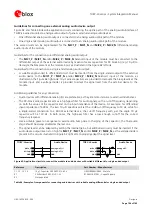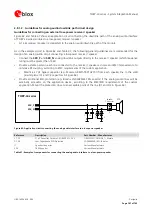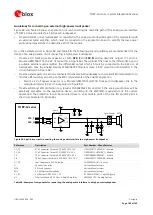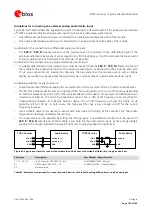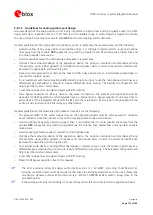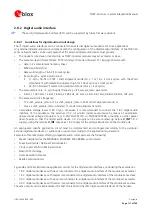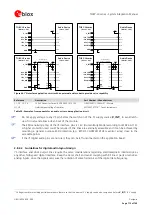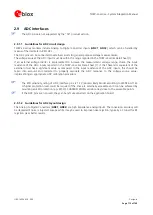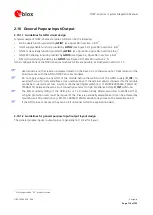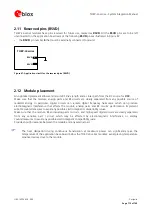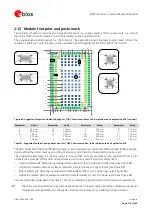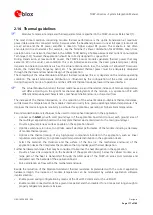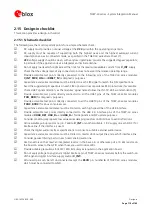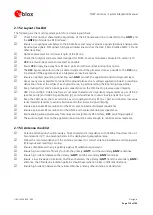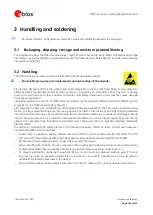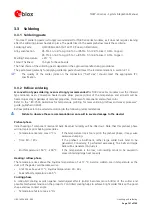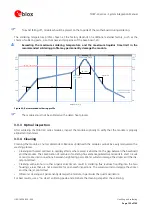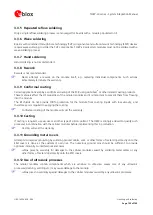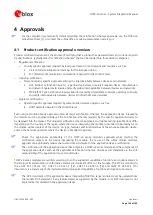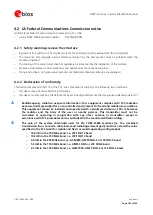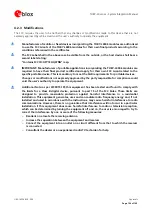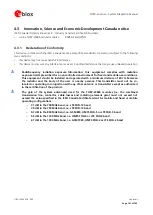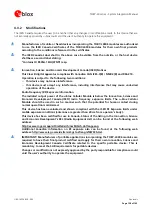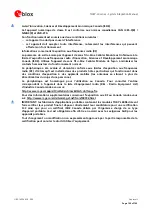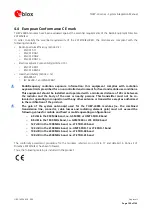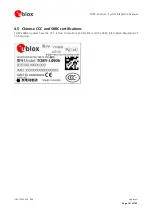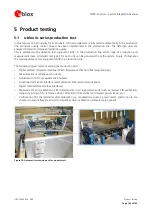
TOBY-L4 series - System Integration Manual
UBX-16024839 - R04
Design-in
Page 117 of 143
2.14
Thermal guidelines
Modules’ temperature range and thermal parameters are specified in the
TOBY-L4 series
Data Sheet
The most critical condition concerning module thermal performance is the uplink transmission at maximum
power (data upload in connected mode), because when the baseband processor runs at full speed, radio circuits
are all active and the RF power amplifier is driven to higher output RF power. This scenario is not often
encountered in real networks (for example, see the Terminal Tx Power distribution for WCDMA, taken from
operation on a live network, described in the
GSMA TS.09 Battery Life Measurement and Current Consumption
[10]); however the application should be correctly designed to cope with it.
During transmission at maximum RF power, the TOBY-L4 series modules generate thermal power that may
exceed 4 W in the worst case condition: this is an indicative value since the exact generated power strictly
depends on operating conditions such as the actual antenna return loss, the number of allocated TX resource
blocks, the transmitting frequency band, etc. The generated thermal power must be adequately dissipated
through the thermal and mechanical design of the application.
The spreading of the actual Module-to-Ambient thermal resistance (R
th,M-A
) depends on the module operating
condition. The overall temperature distribution is influenced by the configuration of the active components
during the specific mode of operation and their different thermal resistance toward the case interface.
The actual Module-to-Ambient thermal resistance value and the relative increase of module temperature
will differ according to the specific mechanical deployments of the module, e.g. application PCB with
different dimensions and characteristics, mechanical shells enclosure, or forced air flow.
The increase of the thermal dissipation, i.e. the reduction of the actual Module-to-Ambient thermal resistance,
will decrease the temperature of the modules’ internal circuitry for a given operating ambient temperature. This
improves the device long-term reliability in particular for applications operating at high ambient temperature.
Recommended hardware techniques to be used to improve heat dissipation in the application:
Connect each
GND
pin with solid ground layer of the application board and connect each ground area of
the multilayer application board with a complete thermal via stacked down to the main ground layer.
Provide a ground plane as wide as possible on the application board.
Optimize antenna return loss, to optimize overall electrical performance of the module including a decrease
of module thermal power.
Optimize the thermal design of any high-power components included in the application, such as linear
regulators and amplifiers, to optimize overall temperature distribution in the application device.
Select the material, the thickness and the surface of the box (i.e. the mechanical enclosure) of the
application device that integrates the module so that it provides good thermal dissipation.
Further hardware techniques that may be considered to improve the heat dissipation in the application:
Provide a heat sink component on the backside of the application board, below the cellular module, as a
large part of the heat is transported through the GND pads of the TOBY-L4 series LGA modules and
dissipated over the backside of the application board.
Force ventilation air-flow within the mechanical enclosure.
Beside the reduction of the Module-to-Ambient thermal resistance implemented with the correct application
hardware design, the increase of module temperature can be moderated by suitable application software
implementation:
Enable power saving configuration by means of the AT+UPSV command or the uCPU API.
Enable module connected mode for a given time period and then disable it for a time period long enough to
properly mitigate temperature increase.

